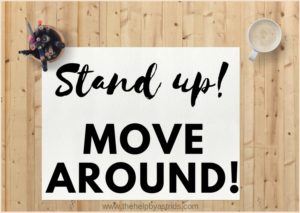 I’ve written an article about what to ask potential candidates when you’re hiring. That article has some basic questions that can be tailored and added to in order to create a (hopefully) comprehensive set of questions that the hiring manager can use to help them choose the best job candidate.
I’ve written an article about what to ask potential candidates when you’re hiring. That article has some basic questions that can be tailored and added to in order to create a (hopefully) comprehensive set of questions that the hiring manager can use to help them choose the best job candidate.
It’s hard to be a hiring manager. The pressure and burden of making the call and hiring the best fit for your organization falls on your shoulders.
However, on the other side of the fence, lies the job candidate. It is equally hard to apply for a job. You know you have to put your best foot forward and be able to articulate how you are the best fit for the job post.
For candidates who are fresh out of school or have no previous job experience, their resumes won’t be able to speak for themselves. They would have to do a lot of convincing for them to be able to get the position. In this tough job market, even those who have prior experience would have a hard time securing a job. We need all the help we can get.
Here are 5 important things to consider when you have an interview lined up.
Don’t be late!
If you’re late, that won’t help much with first impressions. Punctuality is respect for other people’s time, so don’t keep your interviewer waiting. BUT…don’t come in too early either. Your interviewer might have plans and you coming in too early might distract them and make them anxious or even annoyed. 10 to 15 minutes should be the sweet spot.
Dress appropriately
Don’t spend a lot of money on a new wardrobe. Be creative and mix and match existing pieces. If you’re going to buy something, it might as well be a blazer. It’s an investment piece. Choose one in “power” colours such as navy blue or black. Those colours always go well with anything anyway. Speaking of colours, stay away from bold ones or shirts with loud distracting prints. And ladies, please be careful about the neckline of your clothes. Gentlemen, a v-neck sweater works as well if you don’t have a suit jacket or blazer yet. But don’t wear an ugly Christmas sweater.
Be sure you’re qualified for the job
You should hit at least 85% of the qualifications. Otherwise, you will be wasting yours and other people’s time.
Do some research
Don’t just do research on the job post you’re applying for, actually do a bit of research on the industry. This will signal to the hiring manager that you are serious about getting the post and building a career instead of just looking for a job. Some research pointers: get to know how the company started, what’s happening with the company and its industry now, and what’s in the pipeline. If answers aren’t available, those could be good questions to ask your interviewer. Most of the information would be available through the company website.
Don’t lie
Most people pad their resumes, but don’t lie. Especially not about your academic background. It only takes one call to confirm the validity of that information. Save yourself from embarrassment.
We’d love to hear your stories about your job interviews. Share them with us in the comments. Stay humble and hustle hard!
Written by Jaie O. The Help
 Did you know that sitting for long periods of time is a risk factor for early death? But you already knew that, didn’t you? Not to scare you or anything, but new studies show that no matter how much you exercise, staying sedentary for too long can be a huge health risk [
Did you know that sitting for long periods of time is a risk factor for early death? But you already knew that, didn’t you? Not to scare you or anything, but new studies show that no matter how much you exercise, staying sedentary for too long can be a huge health risk [ If you have an independent or family run business, you probably have around two up to five people running it with you. And you might be comfortable with that. After all, these are the people you trust. But what happens when the business starts to grow, as any healthy business should?
If you have an independent or family run business, you probably have around two up to five people running it with you. And you might be comfortable with that. After all, these are the people you trust. But what happens when the business starts to grow, as any healthy business should? On a quest to adapt the most efficient productivity and time management tools, I came across a dozen examples. Some I’ve already written about in a
On a quest to adapt the most efficient productivity and time management tools, I came across a dozen examples. Some I’ve already written about in a  I’m very organized. Before the holidays even rolled in, I have already drafted a gift budget with a list of suggested gifts for friends and family. Neatly wrapped and handsomely ribboned boxes were already laid perfectly underneath the tree well before Christmas day. Whenever I am invited over for an occasion, I see to it that I get the host a gift – a bottle of wine, a box of cookies, a jar of gourmet preserves. Otherwise, I send a digital gift.
I’m very organized. Before the holidays even rolled in, I have already drafted a gift budget with a list of suggested gifts for friends and family. Neatly wrapped and handsomely ribboned boxes were already laid perfectly underneath the tree well before Christmas day. Whenever I am invited over for an occasion, I see to it that I get the host a gift – a bottle of wine, a box of cookies, a jar of gourmet preserves. Otherwise, I send a digital gift.